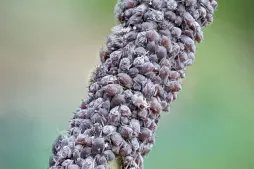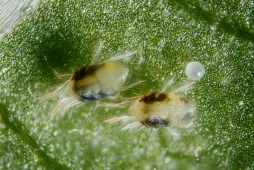Aeschynanthus pulcher 'Mona Lisa', to be contemplated without moderation
Are you a lover of exotic plants or a collector of rare hybrids? Aeschynanthus pulcher 'Mona Lisa' may well catch your eye. This houseplant, a member of the Gesneriaceae family, is native to the tropical forests of Southeast Asia. It is appreciated for its colorful flowers and lush foliage.
How to recognize Aeschynanthus pulcher 'Mona Lisa'?
Aeschynanthus pulcher 'Mona Lisa' is a perennial plant. It can reach 30 to 60 centimetres in height and width. Its size and creeping habit make it ideal for hanging baskets or shelves.
The slender, drooping stems grow to a meter. The leaves are opposite, oval and pointed, with a slightly fleshy texture. They measure between five and ten centimetres in length and are a deep, shiny green.
Flowers appear in summer and persist for several weeks. Tubular with a flared corolla, they are a bright orange-red in contrast to the dark-red calyx.
After flowering, Aeschynanthus pulcher 'Mona Lisa' produces elongated capsule-shaped fruits. They contain numerous seeds which serve to propagate the plant.
This hybrid,developed from the Aeschynanthus pulcher species, is non-toxic to humans and pets.
Our maintenance tips
The plant appreciates light, but fears direct sunlight. Place it behind an east- or west-facing window.
Watering
The substrate must always be kept moist. Water with non-calcareous water at room temperature. You can use rainwater or demineralized water.
Your Aeschynanthus 'Mona Lisa' appreciates abundant watering. The amount of water should correspond to the size of the pot.
After watering, drain off any stagnant water in the saucer. It will rot the roots.
Spray
The air in our apartments is too dry for plants used to high humidity. Mist your Aeschynanthus pulcher 'Mona Lisa' with water at room temperature.
Rainwater is preferable to tap water. Tap water causes white spots on the foliage.
Repotting
In spring, transfer your Aeschynanthus pulcher 'Mona Lisa' to a larger pot, so that it can continue to grow.
Obtain a pierced pot three to five centimetres larger in diameter than the previous one. Line the bottom with clay balls or pebbles.
Aeschynanthus 'Mona Lisa appreciate light, well-drained soil. You can use a mixture of heather earth and perlite or a potting soil for flowering plants to which you add sand.
Pour on a layer of substrate and plant your specimen. Fill the pot with your mixture and tamp gently. Water with non-calcareous water at room temperature to encourage rooting.
Place your pot on a dish of moist clay balls to improve humidity.
Fertilization
You can stimulate the development of your plant during its growth phase, in spring and summer, with fertilizer.
Add flowering plant fertilizer to watering water.
Cleaning
Clean the top and bottom of the leaves with a damp sponge. This removes dust and keeps pests at bay.
Prune
Pruning encourages branching and helps maintain a dense growth habit.
After flowering, remove wilted flowers and cut back stem ends. Use pruning shears or scissors to cut back between three and five centimetres. Remember to clean your tool before use to avoid spreading disease!
Cutting
Cutting is carried out during the strong growth phase, generally in spring and early summer.
Obtain a small, pierced pot. Fill it with a mixture of potting soil for flowering plants (about two-thirds) and sand (one-third).
Make a pilot hole with a pick, a pencil or your finger. Plant your Aeschynanthus 'Mona Lisa' cutting.
Keep the soil moist by watering before the surface dries out.
Diseases / Threats
Information
| Family | Gesneriaceae - Gesneriaceae |
| Type | Aeschynanthe - Aeschynanthus |
| Species | Aeschynanthus pulcher - Aeschynanthus pulcher |
| Lifecycle | Perennial |
| Foliage | Evergreen |
| Exposures | |
| Substrat | |
| Planting methods |
In pots In tubs Planter |
| Categories | |
| Tags |
Beginner Flowery Fritillary |
| Origin |
Southeast Asia |
| Hardiness (USDA) | 11b |
| Leaf color |
|
| Flower colors |
|
Discover plants from the same family
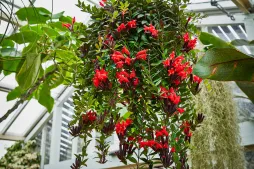
Aeschynanthus pulcher
Discover
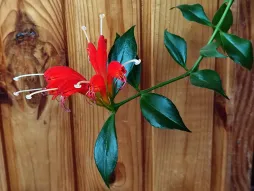
Aeschynanthus speciosus
Discover
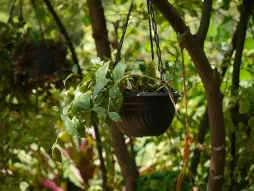
Aeschynanthus longicaulis
Discover
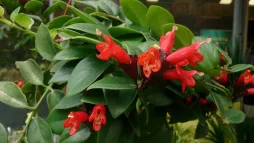
Aeschynanthus radicans
Discover













